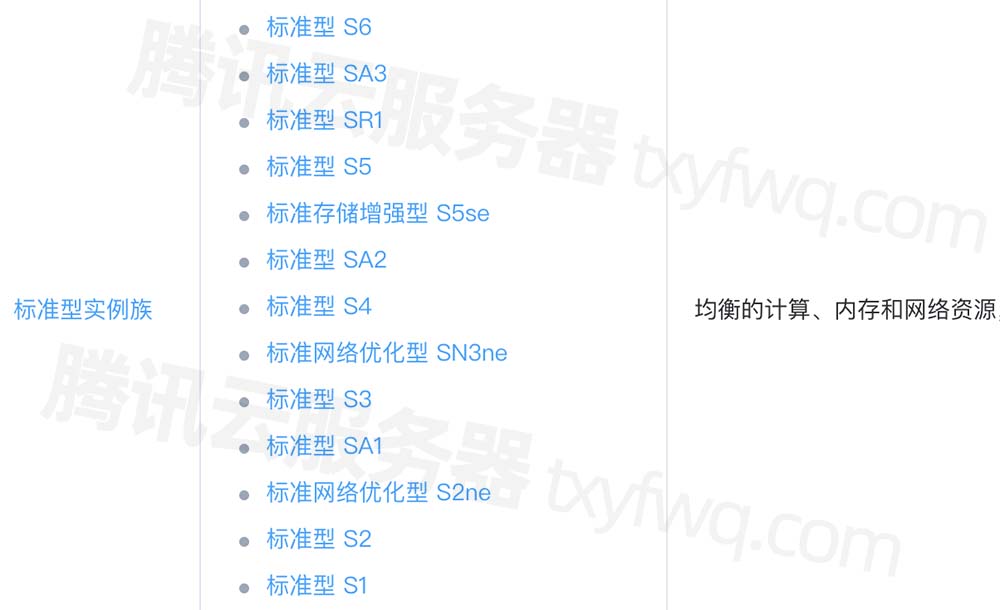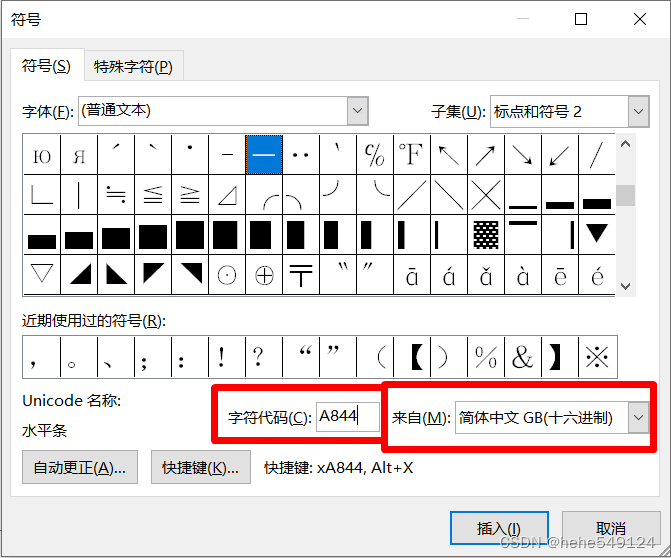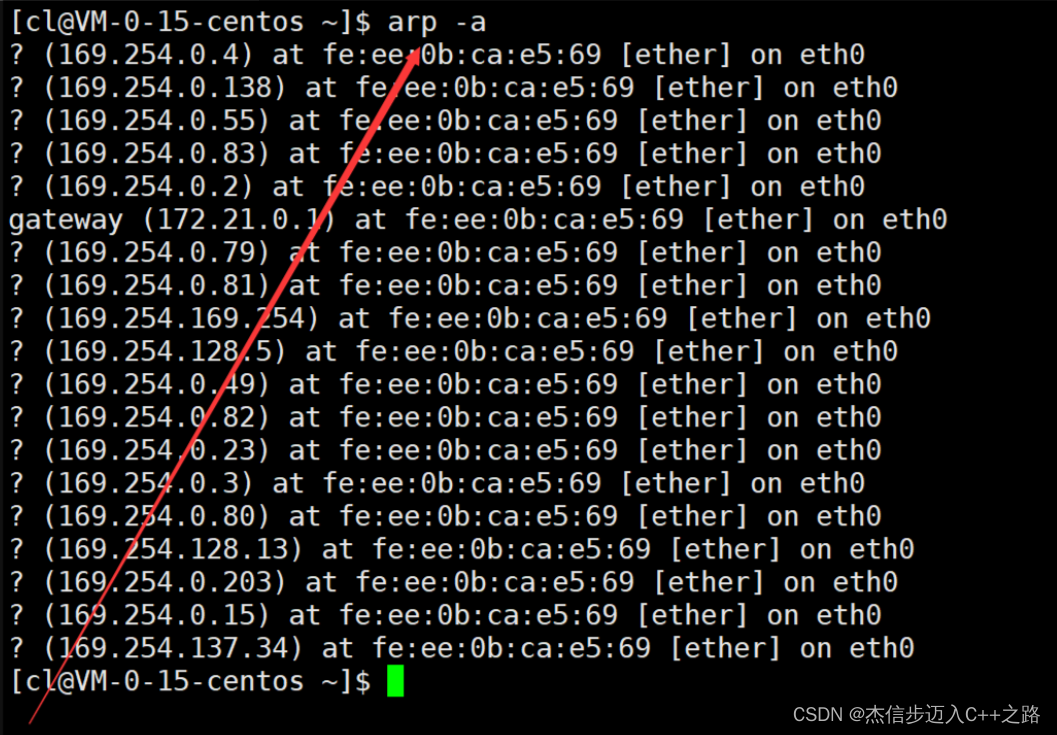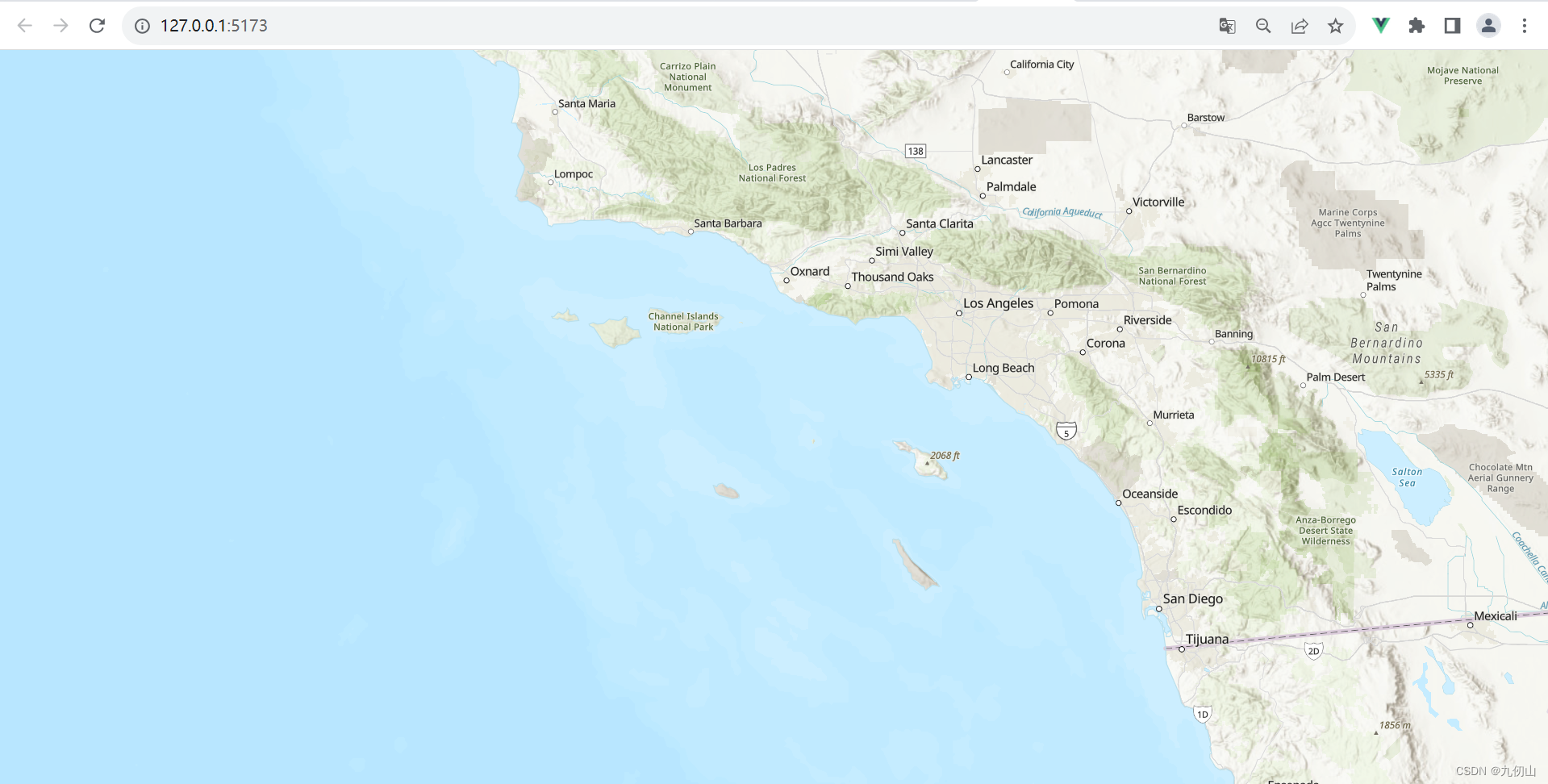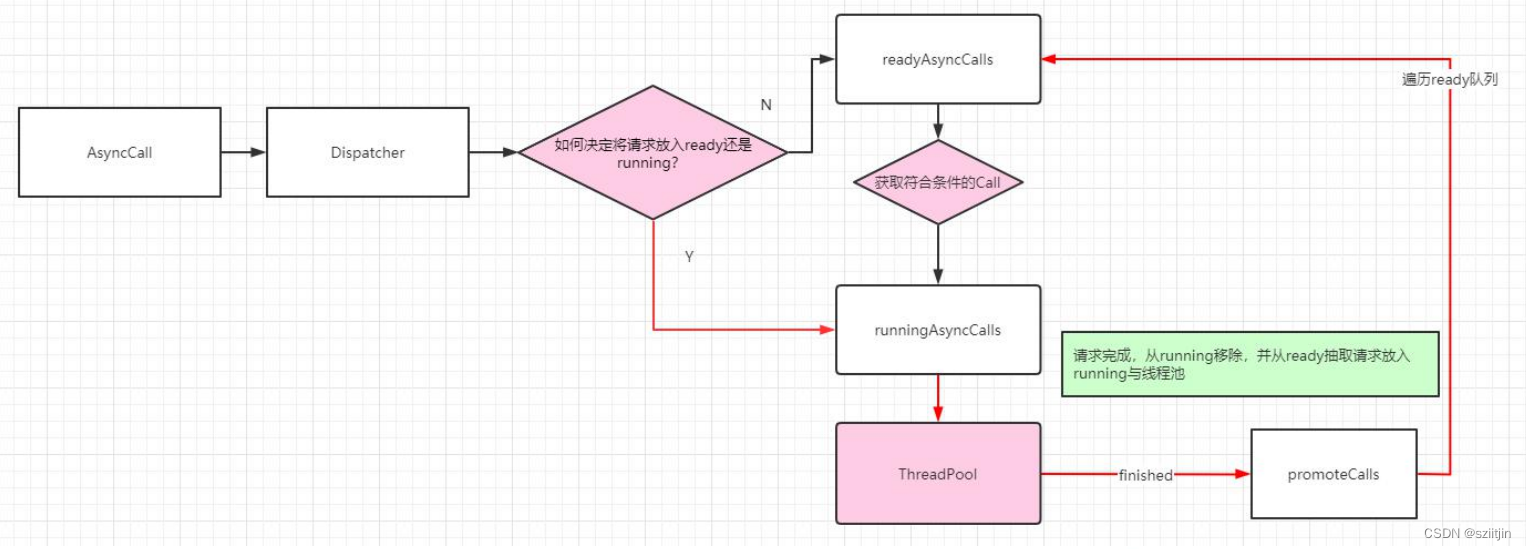利用OpenSSL实现私有 CA 搭建和证书颁发
- 一、私有 CA 搭建
- 1. 安装openssl
- 2. 配置 openssl
- 3. 生成 CA 自己的私钥
- 4. 生成 CA 自己的自签证书
- 5. 验证自签证书
- 二、向私有CA申请证书流程
- 1. 生成应用私钥文件
- 2. 根据应用私钥生成证书申请文件
- 3. 向CA请求颁发证书
- 4. 验证应用证书
- 5. 吊销证书
- 三、遇到的问题及解决方案
- 1. 报错:Can't load /root/.rnd into RNG 139881994547648:error:2406F079:random number generator:RAND_load_file:Cannot open file:../crypto/rand/randfile.c:88:Filename=/root/.rnd
- 2. 报错:Can't open ./demoCA/private/cakey.pem for reading, No such file or directory 140117822038464:error:02001002:system library:fopen:No such file or directory:
- 四、附件
- 1. openssl.cnf 文件内容
一、私有 CA 搭建
1. 安装openssl
# 安装依赖
sudo yum install -y build-essential zlib1g-dev libssl-dev
# 下载,解压,编译,安装
wget https://www.openssl.org/source/old/3.1/openssl-3.1.1.tar.gz
tar -xf openssl-3.1.1.tar.gz
cd openssl-3.1.1
./config --prefix=/usr/local/ssl -Wl,-rpath=/usr/local/ssl/lib
make
sudo make install
# 验证
ls /usr/local/ssl/bin/
# 配置环境变量
sudo vi /etc/profile
export PATH=/usr/local/ssl/bin:$PATH
export LD_LIBRARY_PATH=/usr/local/ssl/lib:$LD_LIBRARY_PATH
# 激活环境
source /etc/profile
# 验证安装
openssl version -a

2. 配置 openssl
# 修改 openssl.cnf ,完整的 openssl.cnf 文件内容附加在最后
sudo vim /usr/lib/ssl/openssl.cnf
修改内容如下:
[ CA_default ]
dir = /etc/pki/CA # 存放和CA相关的文件的目录(CentOS7这个文件默认存在)
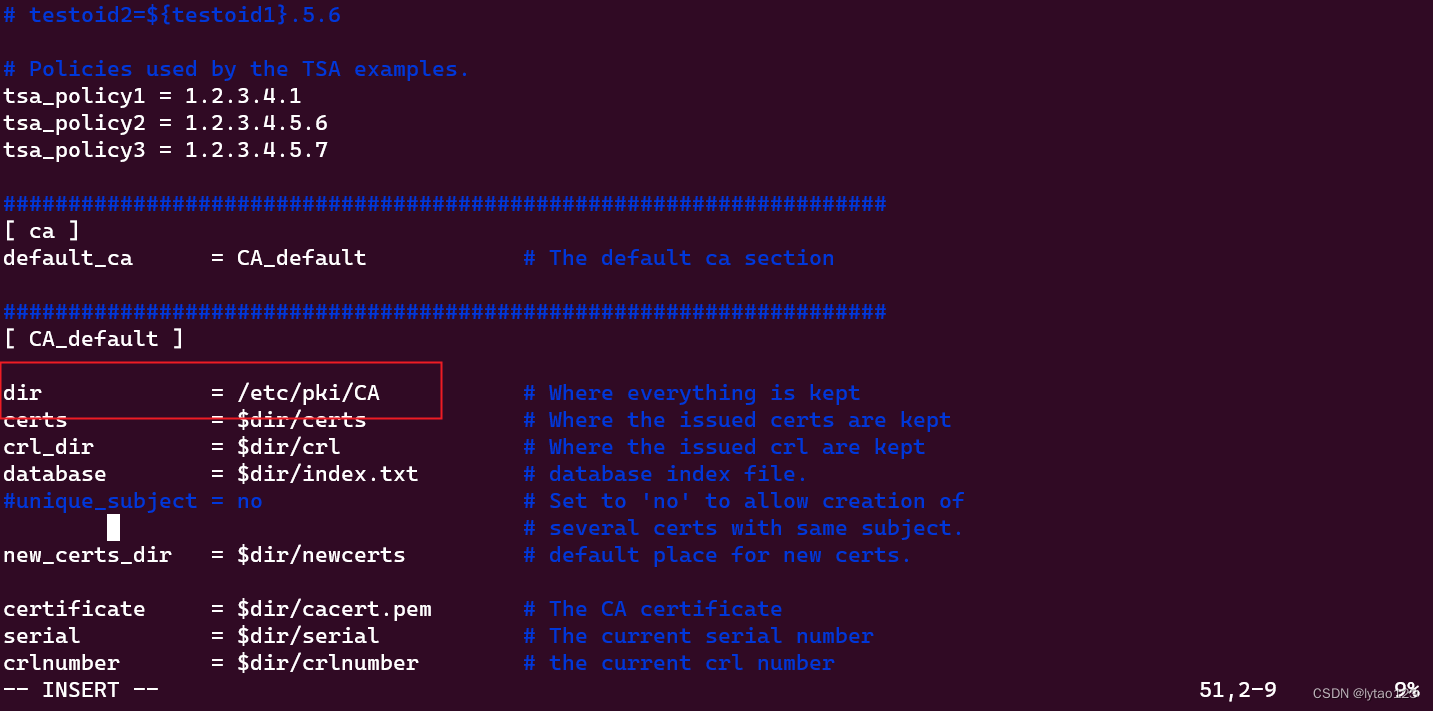
# 创建目录
sudo mkdir -pv /etc/pki/CA/{certs,crl,newcerts,private}
# 证书的数据库文件:存放证书的颁发等信息,不需要人工维护里面的内容,只需要创建对应的文件就行了,会自动往里面写入数据的
sudo touch /etc/pki/CA/index.txt
# 颁发证书的序号(十六进制):第一个证书颁发的时候使用的就是这个编号,后续会自动递增
sudo su && sudo echo 01 > /etc/pki/CA/serial
# 吊销证书的序号(十六进制):第一个证书吊销的时候使用的就是这个编号,后续会自动递增
sudo su && sudo echo 01 > /etc/pki/CA/crlnumber
3. 生成 CA 自己的私钥
# 生成 CA 自己的私钥
sudo openssl genrsa -out /etc/pki/CA/private/cakey.pem 2048
4. 生成 CA 自己的自签证书
# 生成 CA 自己的自签证书
sudo openssl req -new -x509 -key /etc/pki/CA/private/cakey.pem -days 3650 -out /etc/pki/CA/cacert.pem
选项:
-new:创建一个新的证书,生成新证书签署请求
-x509:表示证书的格式,专用于CA生成自签证书
-key:生成请求时用到的私钥文件
-days n:证书的有效期限
-out /PATH/TO/SOMECERTFILE: 证书的保存路径
5. 验证自签证书
# 查看证书信息
sudo openssl x509 -in /etc/pki/CA/cacert.pem -noout -text

二、向私有CA申请证书流程
1. 生成应用私钥文件
# 生成应用的私钥文件
sudo mkdir -p /data/app1 && sudo openssl genrsa -out /data/app1/app1.key 2048
2. 根据应用私钥生成证书申请文件
# 根据应用私钥生成证书申请文件
sudo openssl req -new -key /data/app1/app1.key -out /data/app1/app1.csr
* 采用 match 策略, 默认有三项内容必须和CA一致:国家,省份,组织,如果不同,会出现提示
* 采用的是 option 策略的话就不用保持一致都可以,具体使用哪种模式在 openssl.cnf 配置
3. 向CA请求颁发证书
# 根据应用的证书申请文件通过 ca 签名颁发证书,利用证书申请文件中的用户私钥来实现数字签名
sudo openssl ca -in /data/app1/app1.csr -out /etc/pki/CA/certs/app1.crt -days 1000
4. 验证应用证书
# 查看证书信息
sudo openssl x509 -in /etc/pki/CA/certs/app1.crt -noout -text

# 查看证书的有效性
sudo openssl ca -status 01 # 01 是证书的标号(Serial Number)
证书文件后缀后缀规定:
.crt # certificate的缩写,即证书。证书文件的标识
.csr # Certificate Signing Request,证书签名请求证书申请文件的标识 证书申请完成后,这个证书申请文件就没啥用了
.key # 私钥的标识 .pem也是私钥的标识,但是windows不是别pem结尾的文件
.pem # Privacy Enhanced Mail,打开看文本格式,以"-----BEGIN…"开头, "-----END…"结尾,内容是BASE64编码
一个证书申请文件只能申请一次证书。如果需要实现一个申请文件申请多个证书的方法,需修改 “index.txt.attr” 文件,设置 unique_subject = yes
5. 吊销证书
# 吊销证书
sudo openssl ca -revoke /PATH/FILE
三、遇到的问题及解决方案
1. 报错:Can’t load /root/.rnd into RNG 139881994547648:error:2406F079:random number generator:RAND_load_file:Cannot open file:…/crypto/rand/randfile.c:88:Filename=/root/.rnd
- 1.1 解决方案
cd /root
sudo openssl rand -writerand .rnd
2. 报错:Can’t open ./demoCA/private/cakey.pem for reading, No such file or directory 140117822038464:error:02001002:system library:fopen:No such file or directory:
…/crypto/bio/bss_file.c:72:fopen(‘./demoCA/private/cakey.pem’,‘r’)
- 2.1 解决方案
修改 /usr/lib/ssl/openssl.cnf 文件 的 dir 属性为自己的 ca 相关文件存放路径
四、附件
1. openssl.cnf 文件内容
#
# OpenSSL example configuration file.
# This is mostly being used for generation of certificate requests.
#
# Note that you can include other files from the main configuration
# file using the .include directive.
#.include filename
# This definition stops the following lines choking if HOME isn't
# defined.
HOME = .
RANDFILE = $ENV::HOME/.rnd
# Extra OBJECT IDENTIFIER info:
#oid_file = $ENV::HOME/.oid
oid_section = new_oids
# To use this configuration file with the "-extfile" option of the
# "openssl x509" utility, name here the section containing the
# X.509v3 extensions to use:
# extensions =
# (Alternatively, use a configuration file that has only
# X.509v3 extensions in its main [= default] section.)
[ new_oids ]
# We can add new OIDs in here for use by 'ca', 'req' and 'ts'.
# Add a simple OID like this:
# testoid1=1.2.3.4
# Or use config file substitution like this:
# testoid2=${testoid1}.5.6
# Policies used by the TSA examples.
tsa_policy1 = 1.2.3.4.1
tsa_policy2 = 1.2.3.4.5.6
tsa_policy3 = 1.2.3.4.5.7
####################################################################
[ ca ]
default_ca = CA_default # The default ca section
####################################################################
[ CA_default ]
dir = /etc/pki/CA # Where everything is kept
certs = $dir/certs # Where the issued certs are kept
crl_dir = $dir/crl # Where the issued crl are kept
database = $dir/index.txt # database index file.
#unique_subject = no # Set to 'no' to allow creation of
# several certs with same subject.
new_certs_dir = $dir/newcerts # default place for new certs.
certificate = $dir/cacert.pem # The CA certificate
serial = $dir/serial # The current serial number
crlnumber = $dir/crlnumber # the current crl number
# must be commented out to leave a V1 CRL
crl = $dir/crl.pem # The current CRL
private_key = $dir/private/cakey.pem# The private key
RANDFILE = $dir/private/.rand # private random number file
x509_extensions = usr_cert # The extensions to add to the cert
# Comment out the following two lines for the "traditional"
# (and highly broken) format.
name_opt = ca_default # Subject Name options
cert_opt = ca_default # Certificate field options
# Extension copying option: use with caution.
# copy_extensions = copy
# Extensions to add to a CRL. Note: Netscape communicator chokes on V2 CRLs
# so this is commented out by default to leave a V1 CRL.
# crlnumber must also be commented out to leave a V1 CRL.
# crl_extensions = crl_ext
default_days = 365 # how long to certify for
default_crl_days= 30 # how long before next CRL
default_md = default # use public key default MD
preserve = no # keep passed DN ordering
# A few difference way of specifying how similar the request should look
# For type CA, the listed attributes must be the same, and the optional
# and supplied fields are just that :-)
policy = policy_match
# For the CA policy
[ policy_match ]
countryName = match
stateOrProvinceName = match
organizationName = match
organizationalUnitName = optional
commonName = supplied
emailAddress = optional
# For the 'anything' policy
# At this point in time, you must list all acceptable 'object'
# types.
[ policy_anything ]
countryName = optional
stateOrProvinceName = optional
localityName = optional
organizationName = optional
organizationalUnitName = optional
commonName = supplied
emailAddress = optional
####################################################################
[ req ]
default_bits = 2048
default_keyfile = privkey.pem
distinguished_name = req_distinguished_name
attributes = req_attributes
x509_extensions = v3_ca # The extensions to add to the self signed cert
# Passwords for private keys if not present they will be prompted for
# input_password = secret
# output_password = secret
# This sets a mask for permitted string types. There are several options.
# default: PrintableString, T61String, BMPString.
# pkix : PrintableString, BMPString (PKIX recommendation before 2004)
# utf8only: only UTF8Strings (PKIX recommendation after 2004).
# nombstr : PrintableString, T61String (no BMPStrings or UTF8Strings).
# MASK:XXXX a literal mask value.
# WARNING: ancient versions of Netscape crash on BMPStrings or UTF8Strings.
string_mask = utf8only
# req_extensions = v3_req # The extensions to add to a certificate request
[ req_distinguished_name ]
countryName = Country Name (2 letter code)
countryName_default = AU
countryName_min = 2
countryName_max = 2
stateOrProvinceName = State or Province Name (full name)
stateOrProvinceName_default = Some-State
localityName = Locality Name (eg, city)
0.organizationName = Organization Name (eg, company)
0.organizationName_default = Internet Widgits Pty Ltd
# we can do this but it is not needed normally :-)
#1.organizationName = Second Organization Name (eg, company)
#1.organizationName_default = World Wide Web Pty Ltd
organizationalUnitName = Organizational Unit Name (eg, section)
#organizationalUnitName_default =
commonName = Common Name (e.g. server FQDN or YOUR name)
commonName_max = 64
emailAddress = Email Address
emailAddress_max = 64
# SET-ex3 = SET extension number 3
[ req_attributes ]
challengePassword = A challenge password
challengePassword_min = 4
challengePassword_max = 20
unstructuredName = An optional company name
[ usr_cert ]
# These extensions are added when 'ca' signs a request.
# This goes against PKIX guidelines but some CAs do it and some software
# requires this to avoid interpreting an end user certificate as a CA.
basicConstraints=CA:FALSE
# Here are some examples of the usage of nsCertType. If it is omitted
# the certificate can be used for anything *except* object signing.
# This is OK for an SSL server.
# nsCertType = server
# For an object signing certificate this would be used.
# nsCertType = objsign
# For normal client use this is typical
# nsCertType = client, email
# and for everything including object signing:
# nsCertType = client, email, objsign
# This is typical in keyUsage for a client certificate.
# keyUsage = nonRepudiation, digitalSignature, keyEncipherment
# This will be displayed in Netscape's comment listbox.
nsComment = "OpenSSL Generated Certificate"
# PKIX recommendations harmless if included in all certificates.
subjectKeyIdentifier=hash
authorityKeyIdentifier=keyid,issuer
# This stuff is for subjectAltName and issuerAltname.
# Import the email address.
# subjectAltName=email:copy
# An alternative to produce certificates that aren't
# deprecated according to PKIX.
# subjectAltName=email:move
# Copy subject details
# issuerAltName=issuer:copy
#nsCaRevocationUrl = http://www.domain.dom/ca-crl.pem
#nsBaseUrl
#nsRevocationUrl
#nsRenewalUrl
#nsCaPolicyUrl
#nsSslServerName
# This is required for TSA certificates.
# extendedKeyUsage = critical,timeStamping
[ v3_req ]
# Extensions to add to a certificate request
basicConstraints = CA:FALSE
keyUsage = nonRepudiation, digitalSignature, keyEncipherment
[ v3_ca ]
# Extensions for a typical CA
# PKIX recommendation.
subjectKeyIdentifier=hash
authorityKeyIdentifier=keyid:always,issuer
basicConstraints = critical,CA:true
# Key usage: this is typical for a CA certificate. However since it will
# prevent it being used as an test self-signed certificate it is best
# left out by default.
# keyUsage = cRLSign, keyCertSign
# Some might want this also
# nsCertType = sslCA, emailCA
# Include email address in subject alt name: another PKIX recommendation
# subjectAltName=email:copy
# Copy issuer details
# issuerAltName=issuer:copy
# DER hex encoding of an extension: beware experts only!
# obj=DER:02:03
# Where 'obj' is a standard or added object
# You can even override a supported extension:
# basicConstraints= critical, DER:30:03:01:01:FF
[ crl_ext ]
# CRL extensions.
# Only issuerAltName and authorityKeyIdentifier make any sense in a CRL.
# issuerAltName=issuer:copy
authorityKeyIdentifier=keyid:always
[ proxy_cert_ext ]
# These extensions should be added when creating a proxy certificate
# This goes against PKIX guidelines but some CAs do it and some software
# requires this to avoid interpreting an end user certificate as a CA.
basicConstraints=CA:FALSE
# Here are some examples of the usage of nsCertType. If it is omitted
# the certificate can be used for anything *except* object signing.
# This is OK for an SSL server.
# nsCertType = server
# For an object signing certificate this would be used.
# nsCertType = objsign
# For normal client use this is typical
# nsCertType = client, email
# and for everything including object signing:
# nsCertType = client, email, objsign
# This is typical in keyUsage for a client certificate.
# keyUsage = nonRepudiation, digitalSignature, keyEncipherment
# This will be displayed in Netscape's comment listbox.
nsComment = "OpenSSL Generated Certificate"
# PKIX recommendations harmless if included in all certificates.
subjectKeyIdentifier=hash
authorityKeyIdentifier=keyid,issuer
# This stuff is for subjectAltName and issuerAltname.
# Import the email address.
# subjectAltName=email:copy
# An alternative to produce certificates that aren't
# deprecated according to PKIX.
# subjectAltName=email:move
# Copy subject details
# issuerAltName=issuer:copy
#nsCaRevocationUrl = http://www.domain.dom/ca-crl.pem
#nsBaseUrl
#nsRevocationUrl
#nsRenewalUrl
#nsCaPolicyUrl
#nsSslServerName
# This really needs to be in place for it to be a proxy certificate.
proxyCertInfo=critical,language:id-ppl-anyLanguage,pathlen:3,policy:foo
####################################################################
[ tsa ]
default_tsa = tsa_config1 # the default TSA section
[ tsa_config1 ]
# These are used by the TSA reply generation only.
dir = /etc/pki/CA # TSA root directory
serial = $dir/tsaserial # The current serial number (mandatory)
crypto_device = builtin # OpenSSL engine to use for signing
signer_cert = $dir/tsacert.pem # The TSA signing certificate
# (optional)
certs = $dir/cacert.pem # Certificate chain to include in reply
# (optional)
signer_key = $dir/private/tsakey.pem # The TSA private key (optional)
signer_digest = sha256 # Signing digest to use. (Optional)
default_policy = tsa_policy1 # Policy if request did not specify it
# (optional)
other_policies = tsa_policy2, tsa_policy3 # acceptable policies (optional)
digests = sha1, sha256, sha384, sha512 # Acceptable message digests (mandatory)
accuracy = secs:1, millisecs:500, microsecs:100 # (optional)
clock_precision_digits = 0 # number of digits after dot. (optional)
ordering = yes # Is ordering defined for timestamps?
# (optional, default: no)
tsa_name = yes # Must the TSA name be included in the reply?
# (optional, default: no)
ess_cert_id_chain = no # Must the ESS cert id chain be included?
# (optional, default: no)
ess_cert_id_alg = sha1 # algorithm to compute certificate
# identifier (optional, default: sha1)

